Visiting the Anne Frank House in Amsterdam
Words by Dalene Heck / Photography by Pete Heck (unless noted)
Stepping into The Anne Frank House is a profound and emotionally stirring experience that resonates long after you leave. This historic landmark in Amsterdam transports you back in time, immersing you in the poignant story of Anne Frank and her family.
As you climb the narrow staircase and walk through the concealed entrance, the atmosphere becomes almost palpable, drawing you into the hidden world of the Frank family home where Anne and her loved ones sought refuge during World War II.
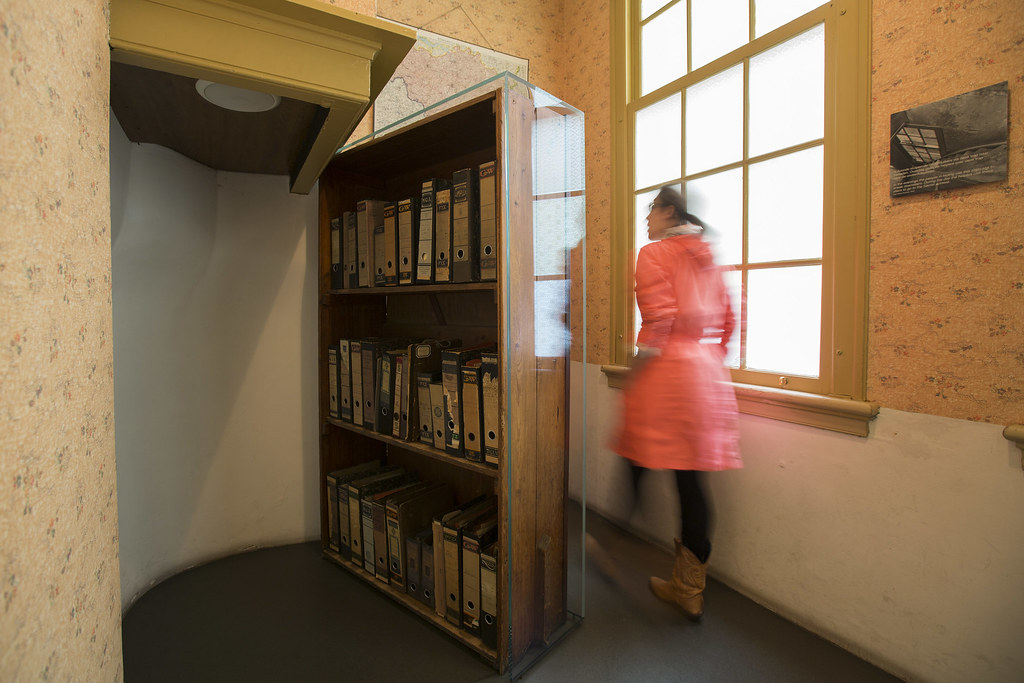
The authentic artifacts, intimate diary entries, and hauntingly preserved rooms create a powerful connection to Anne’s life and the harsh realities faced by those in hiding. It’s a place where history comes alive, where you can pause, reflect, and pay tribute to the resilience and spirit of a young girl whose words continue to inspire generations.
The Anne Frank House is not just a museum; it’s a testament to the importance of tolerance, understanding, and the enduring power of hope.
Tips for Visiting the Anne Frank House Museum
Where The Anne Frank House Museum is Located
The Anne Frank House (or, the Anne Frank Huis, as it is labelled on the building itself) is located in Amsterdam, the capital city of the Netherlands, in Europe. You can reach Amsterdam by flying into Amsterdam Schiphol Airport (AMS), and then take a 15-20 minute train ride to Amsterdam Central Station.

From there, it is a 20-minute walk to the museum. Alternatively, take tram 13 or 17 and get off at the Westermarkt stop. It is a 10-minute walk from Dam Square.
The Anne Frank House is situated at Prinsengracht 263-267, along the famous canal called Prinsengracht, The entrance to the museum is around the corner, at Westermarkt 20.
Practical Information
- Allocate at least one to two hours for your visit to the Anne Frank House. The museum can get crowded, so consider visiting early in the morning or later in the afternoon for a more relaxed experience.
- Expect security checks at the door. Large bags and backpacks are not allowed inside, so it’s best to travel light.
- In order to protect the original items in the museum and to avoid causing a nuisance to other visitors, photography is not allowed in the museum.
- The museum has a cloakroom where you can leave your coats, bag, and umbrellas. There is no space to store large bags and backpacks, suitcases, or other large items. Luggage is not allowed to be stored at the museum.
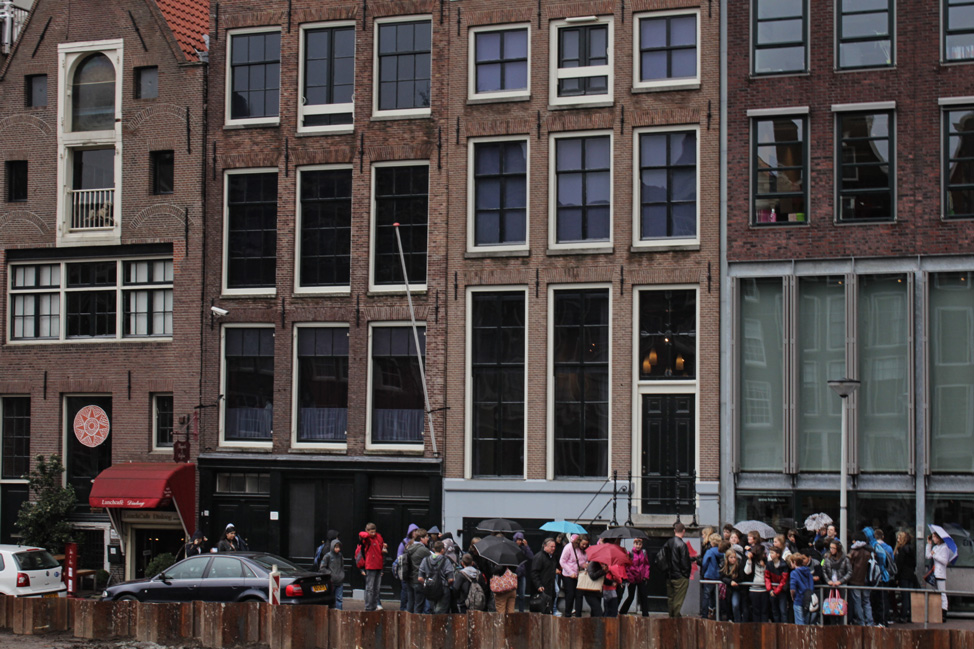
- The FREE audio tour is key to your experience of the museum. It provides you with more information about the persecution of the Jews, the Second World War, the people in hiding, and their helpers. The audio tour is an essential addition to the stories told inside the museum and to the documents and objects you will see there.
- The Anne Frank House is an old building with narrow staircases, making it challenging for individuals with mobility issues. Unfortunately, the old part of the museum and the Secret Annex are not accessible for people using wheelchairs in the space. A special entry for people using wheelchairs provides access to the modern part of the museum, where they can view the temporary exhibition, the museum cafe, and the museum shop.
- The museum preserves the memory of Anne Frank and the Holocaust. Show respect for the exhibits and the stories they represent by maintaining a quiet and respectful demeanour.
- The recommended minimum age for children is 10 years, but it is up to parents to judge whether their child is ready for such a serious subject.
- After your tour, you can check out the museum’s Visitors’ Center, which offers additional exhibits, a shop, and a café where you can reflect on how you are feeling after the experience. The café offers a wide range of hot and cold drinks as well as various snacks and lunch dishes.
- At the Museum Gift Shop you can buy The Diary of Anne Frank, the museum catalogue, postcards, or one of our many other publications. Your purchase helps the Anne Frank House conserve the museum and contributes to educational activities.
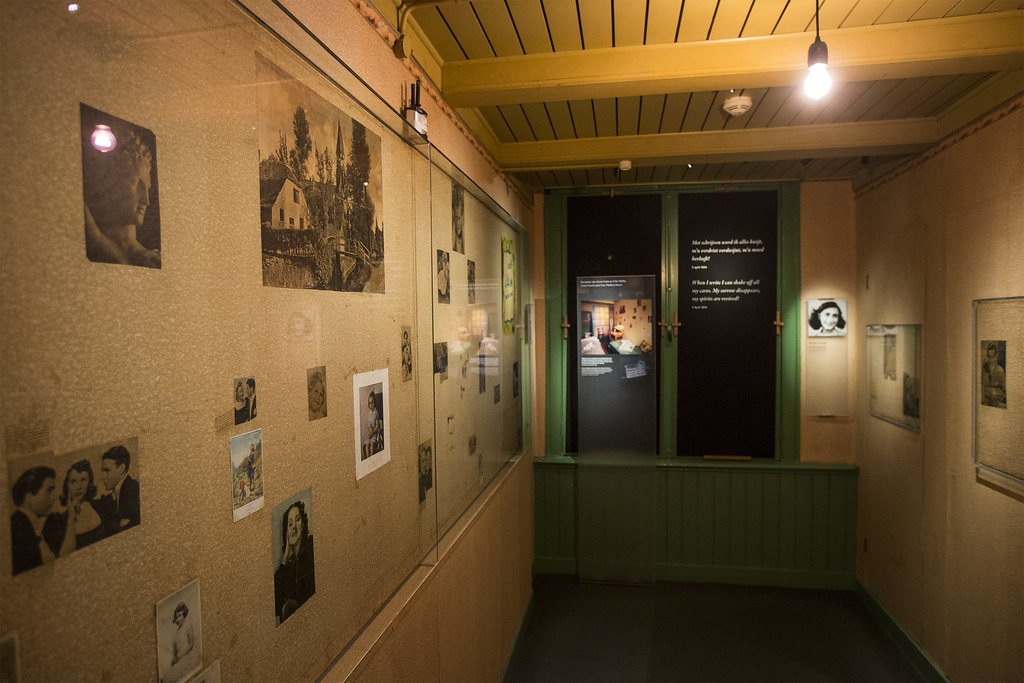
Admission to the Anne Frank House
The Anne Frank House is open daily from 09:00 to 22:00 and can only be visited with tickets bought online for a specific time slot. The same applies to tickets for children (0-9 years old) and visitors with discount cards. Payments are only accepted by bank or credit card.
Every Tuesday at 10 am CEST all tickets become available for a visit six weeks later. You can opt for a museum visit or a museum visit with an introductory program. Note that there are exceptions for open hours and visitors are recommended to check the website.
- adult €16.00
- 10-17 years €7.00
- 0-9 years €1.00
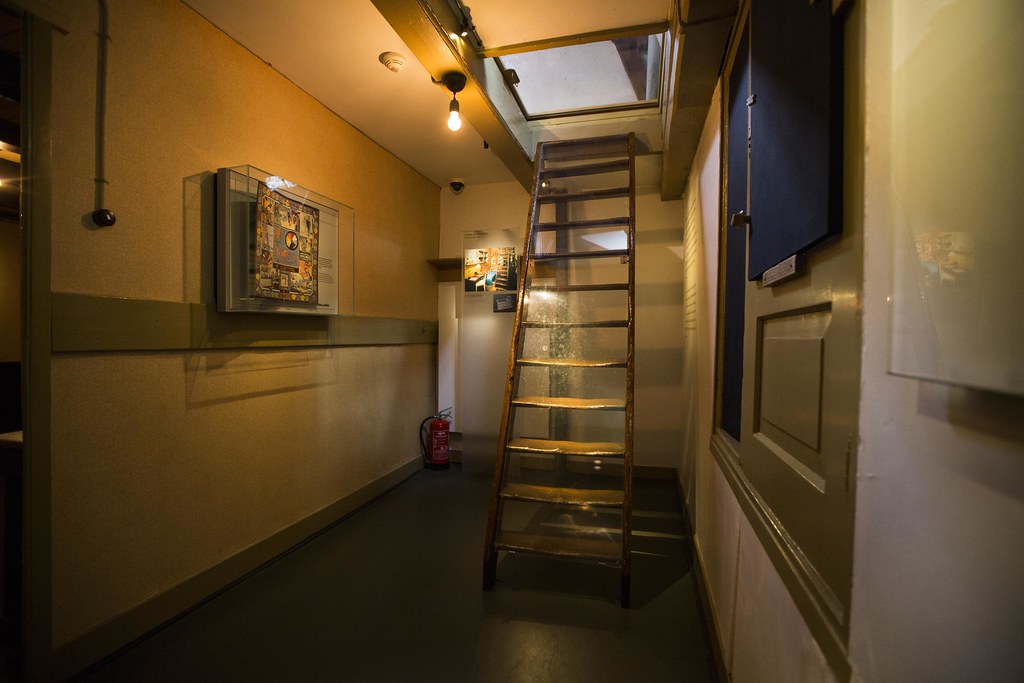
What You’ll See Inside the Anne Frank House
The tour of the Anne Frank House Museum offers a profound and moving experience that takes you through the hidden annex where Anne Frank and her family lived in hiding during WWII. Led by knowledgeable guides, the tour provides a glimpse into the daily life of Anne Frank, her family, and the others who sought refuge there.
Up the narrow stairs and through a small room is a moveable bookcase that concealed the doorway to the secret annex. The small rooms that the eight friends occupied are bare of furniture but contain small replicas depicting what sparse belongings they did have. The walls are decorated as they had been during their doomed occupation.
Other items of interest include:
- The hinged bookcase, entryway to the Secret Annex
- Anne Frank’s first diary
- Height marks of Anne and Margot Frank
- Anne Frank’s room
- Personal objects of the people who were hiding
- Map of Normandy
- Preserved rooms
- Additional hiding places
- Original artifacts and exhibits
- Quotes, photos, videos, and original items
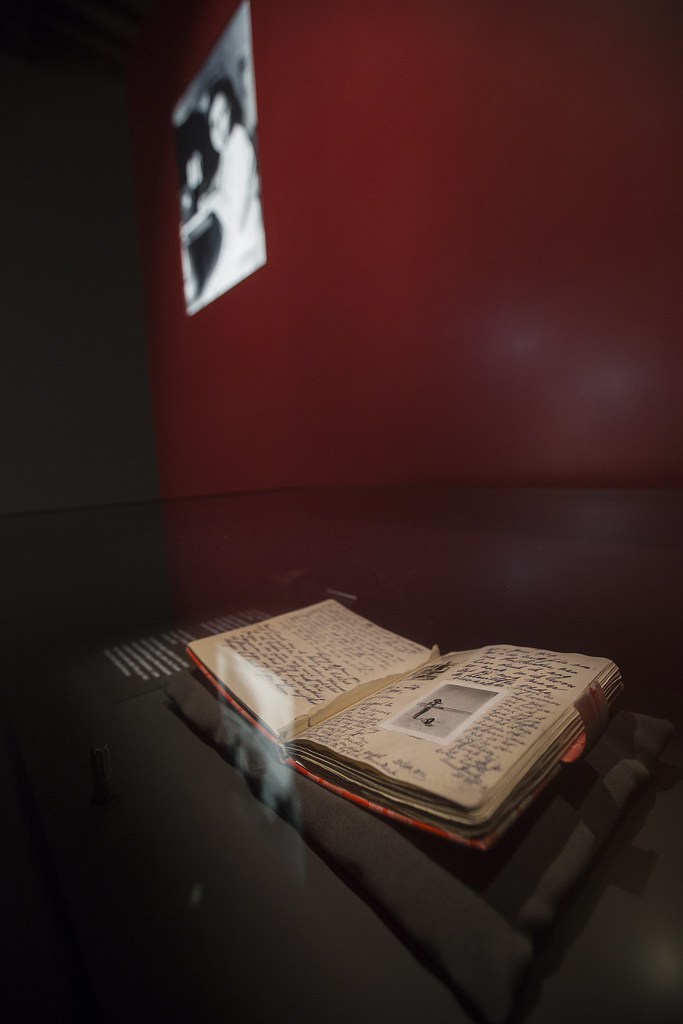
Anne Frank House Tours
The museum on the Prinsengracht canal, one of the most famous spots in Amsterdam, guides visitors through each room of the actual house, starting with the warehouse on the bottom floor, where the Frank family business continued under non-Jewish management. Tours of the Anne Frank House allow for reflection and understanding of the historical significance of the house and Anne’s powerful story. It is a somber and educational journey that leaves a lasting impression on visitors.
If you’re interested in learning more, you could also take the Anne Frank Guided Walking Tour through Amsterdam’s Jewish Quarter. Discover Amsterdam’s WWII history and follow in the footsteps of Anne Frank on this walking tour of the Jewish Quarter. See the Jewish Historical Museum, the Portuguese Synagogue, and the Auschwitz Monument, and end the tour outside the Anne Frank House (entrance not included).

Our Experience
I knew the moment I walked in that I didn’t stand a chance.
As we entered the first dimly lit room where large, simple photos of Anne graced blank white walls along with chilling excerpts from her famous diary, the lump in my throat was immediate and pressing.
“We have to whisper and tread lightly during the day, otherwise the people in the warehouse might hear us.” – Anne Frank penned on July 11th, 1942. Herself, her sister, her parents, and four others stayed hidden in several small rooms above our heads for almost two years before being discovered by Nazi Secret Service during WWII.
Anne’s room inside the Frank family home is plastered with pictures of movie stars. The thought of all her hopes being pinned on that wall, her only window to the outside world, while the actual panes of glass in her home were covered in black sheets, made me catch my breath. The repression, the darkness, the suffocation.
But that isn’t what did it.
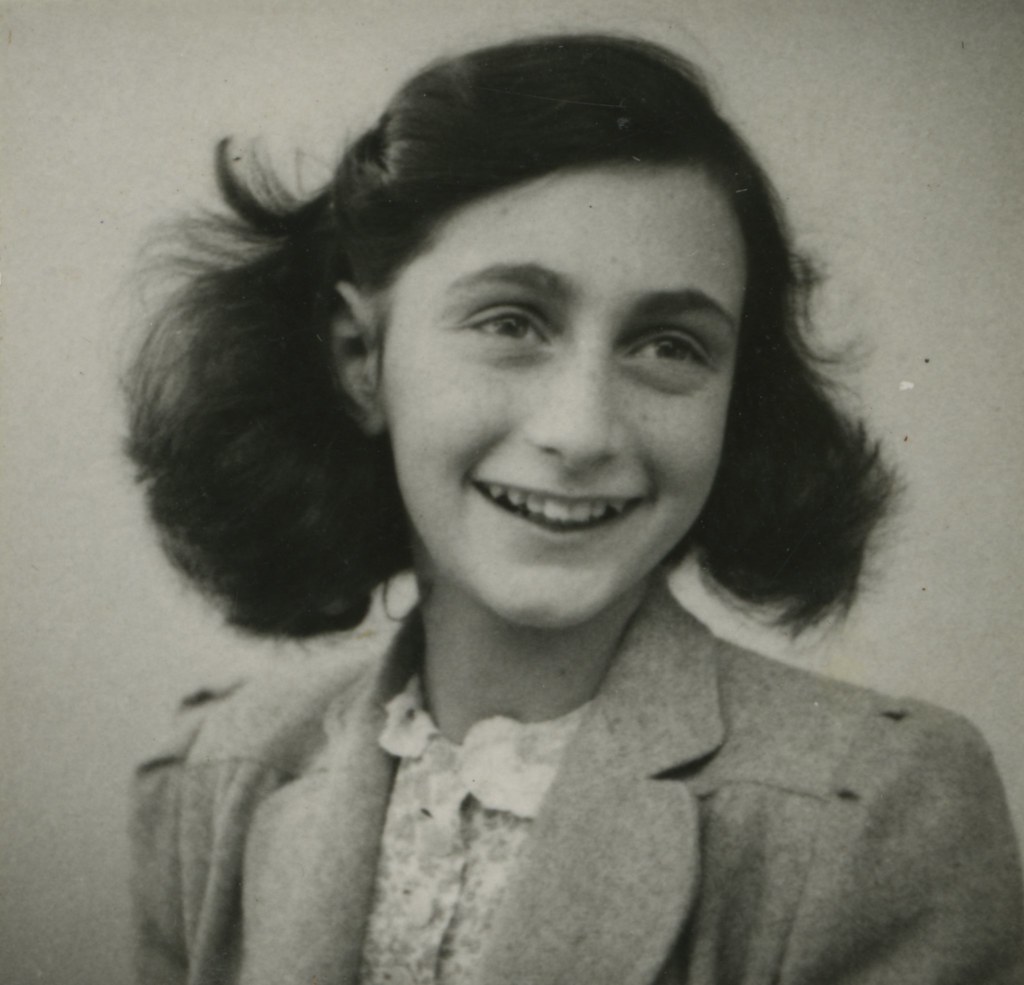
It wasn’t the black and white portraits either, of the seemingly joyous teenager that was Anne. All of them within the house are of her smiling, displaying a spirit that believably could withstand anything.
It wasn’t even the chilling text that is displayed with these pictures, the quotes that you can imagine her writing in her diary that brought reality to her anguish. It also wasn’t the tiny television that showed images of the British liberating the Bergen-Belsen camp where she had been held with her sister, the liberation happening just one short month after her own death. It wasn’t the images of the piles of discarded bodies, or the flaccid skin that draped the bones of those who had “survived”.
It was, finally, a picture of Otto Frank that allowed for a little release of my emotions that were bottled almost an hour before.
The picture of Anne’s father was taken in 1950 upon his return to the secret annex on Prinsengracht. The sole surviving member of the Frank family, he brought his daughter’s famous diary and story to the world, and was instrumental in setting up the Anne Frank House.
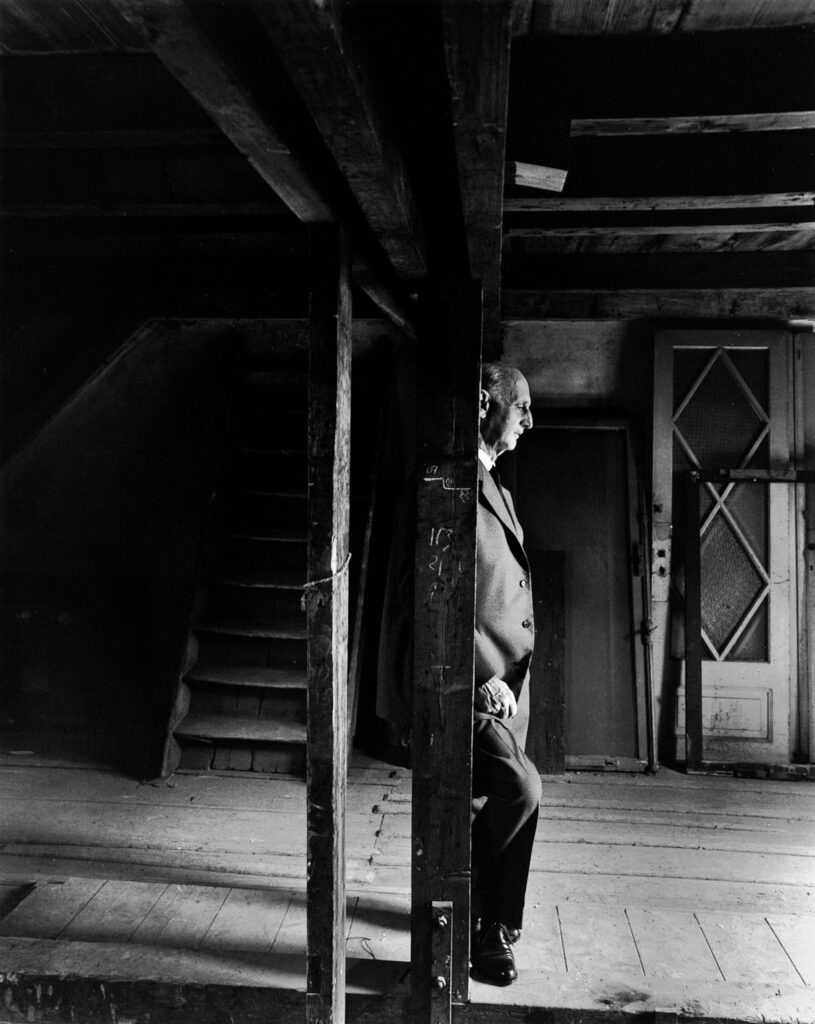
And he stood in that annex, several years after losing his wife and two daughters, staring woefully, soulfully, at the empty room before him. Light streamed in through a window, likely never seen during his days in captivity there, casting a long shadow behind him, and filling his mind with thoughts completely inconceivable to me, to anyone.
He was probably the least fortunate of them all – being the only one who had lived through and escaped the concentration camps. Left to live with the memories, the pain, and most probably, a feeling of guilt. Yet his commitment to push through that, to bring Anne’s story to the world and teach peace and tolerance is nothing short of phenomenal.
Otto Frank survived so his family’s story could be shared, so we can never forget.
Inspirational.
Heartbreaking.
“To build up a future, you have to know the past.”
Otto Frank, 1967

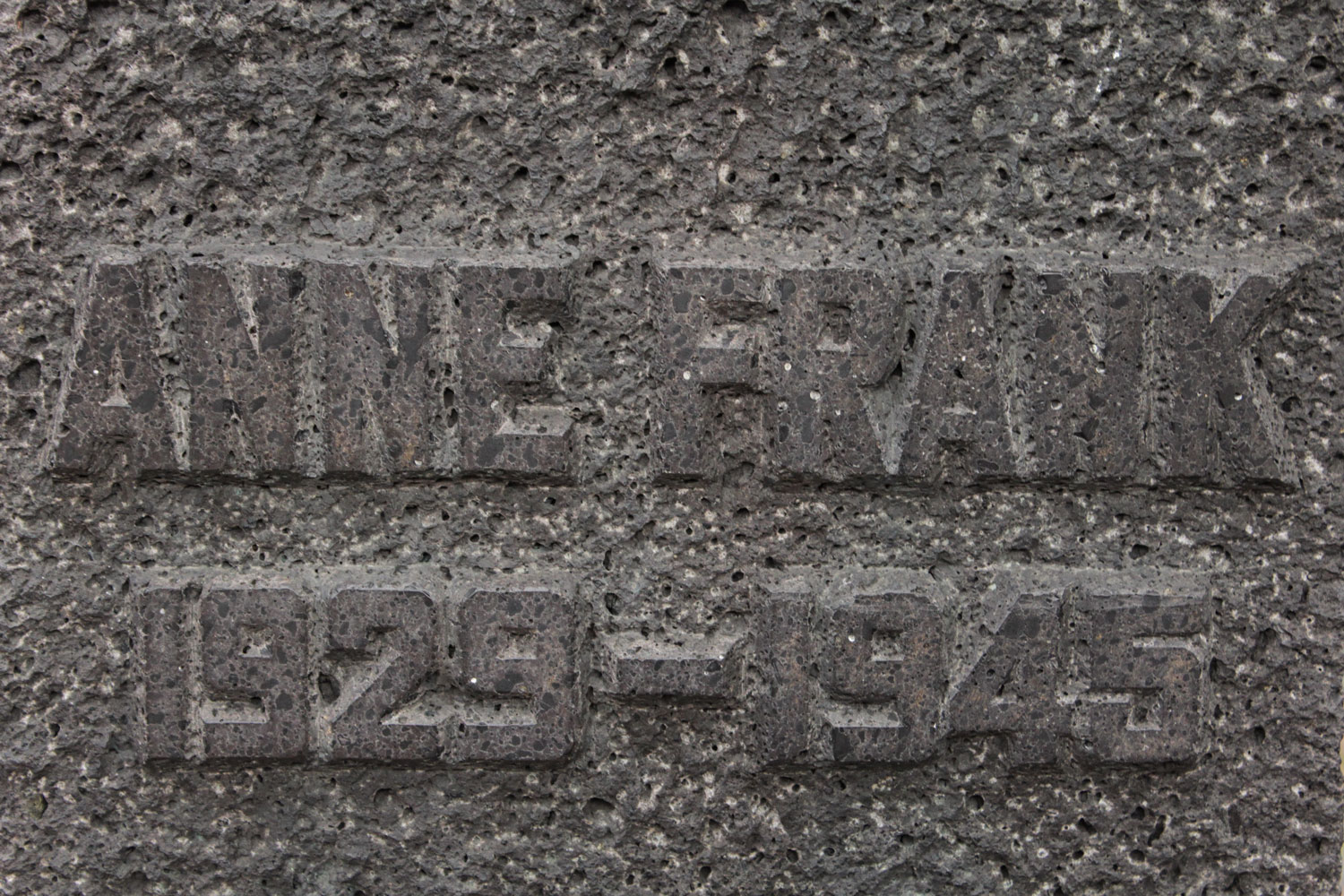
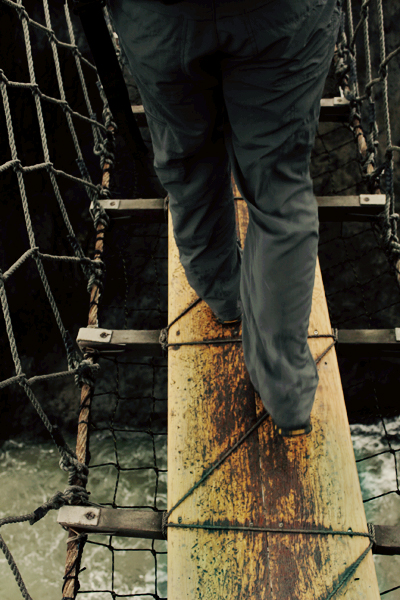


Without Otto, people may never have heard of Anne Frank. He was a brave man to share his pain with the world but maybe in a way, it helped him come to terms with what he and his family went through.
I am sure that it must have helped him. Doing good from a tragedy such as that is sometimes the only way to get through it (speaking from my limited experience)
What a powerful tribute you’ve written here. The Anne Frank House got to me as well. What did it for me was the exhibition of ongoing genocides around the world. I’m not sure if it is still there as it was meant to be a temporary exhibition. The fact that we as humans still haven’t learn from our past mistakes is truly heartbreaking.
Thanks Alison. That exhibit isn’t there anymore – probably a good thing for me – I would have been a mess from it.
I had no idea you guys visited the Anne Frank house!
Amazing…
This is really moving. We’ve visited most of the Holocaust museums and memorials in Berlin these past few weeks, and I’m still processing it all. I simultaneously feel devastated by how awful some people can be… and inspired by how good others are. It’s a lot to take in.
I’ve read so much about the world wars that I want to see all the museums and memorials, but I really worry about how I would handle it.
That is heart wrenching. I’m longing to read the book again to make me feel more humble with my own life.
That is one thing we’ve found about our travels Mom – we are constantly humbled in that way. As much as we think we’ve been through some bad shit, there are always many, many people who have had it much worse off then us.
This is a beautiful post.
We’ve been traveling for six months, and the Anne Frank House stands out as one of our most moving experiences. The visit inspired my daughter, 10, to read the diary for the first time.
I was struck by the film interviews. Otto saying that although he and Anne were close, he had no idea of her depths and her seriousness. That parents can never really know their own children. Also Anne’s friend surmising Anne might have survived those last few weeks if only she’d known her father still lived.
Heartbreaking.
YES – that interview was so sad as well, that part about “parents not ever really knowing their children.” What he must have went through as he read it. I’m glad the visit inspired your daughter, when we were there, a lot of school children were also, and I hope hope hope they took something away from it.
Otto is what did it for me too, I made it through alllll the rooms and then that last video of him talking about never really knowing Anne and my heart broke.
That was really heartbreaking, I agree. How he has dealt with the pain over the years, I don’t think I could ever understand…
Wow. That is really heartbreaking. I was only in Amsterdam for a few days, so I didn’t get to visit the Anne Frank house. Part of me wishes I had, but I’m sure it would have made a huge impact on me as well.
Sometimes, I wish I didn’t have an interest in going to these things. It makes me terribly sad, and angry. I have to space it out and not do too much of it at once, or else I think I might run to the hills and live there forever. 🙂
Wow, what a thoughtful post. Thank you.
Thank YOU! xoxo
I made sure to visit the Anne Frank House when I was in Amsterdam a few years ago. I had never really thought about how everything affected Otto Frank until I saw those interviews with him at the end. I think it’s pretty impossible to visit the Anne Frank and not be moved.
They set it up quite perfectly, the way they weave you through the rooms and how bare they are kept. I’ll admit that I didn’t even know Otto Frank survived it all until I went in (well, I’m sure I knew at some point, but forgot!) It is soooo worth a visit for anyone who goes to Amsterdam.
What a heart warming post. Anne Frank was one inspirational girl. It must have indeed been very inspiring to visit the place.
Have a nice day Dalene:)
Thanks Arti – inspiring, and heartbreaking – for sure…
It certainly is an evocative museum. (Funnily, I’ve scheduled a post about it as well). My youngest is 10 and her class recently read Anne’s diary – so we’re planning a weekend trip to Amsterdam to see it very soon.
I never read her diary growing up, and now I want to! This happens everywhere I go, I have a “to read” list that is a mile long. I’m sure your kids (and you) will really enjoy the visit.
Very powerful… this gave me goosebumps as I read it.
Thanks so much Emily!
Thank you so much for this beautiful and illuminating post. We were only in Amsterdam for two days and didn’t realize you have to get reservations in advance to go through the house, so we missed it.
Yes, the queue is quite long to get in, but after being through it, I’m glad they do it that way, too many people inside would really detract from the experience.
It’s a wonderful place, hugely evocative of those barbaric times with a very powerful message which I hope we never forget. Did you manage to see the homo-monument which is adjacent? It’s a large subtle pink triangle mounted into the pavement that juts into the canal. This commemorates the persecution and execution of gay people by the Nazis. Just as Anne would have worn the Star of David in the death camp, gay people were forced to wear a pink triangle.
Wow, no, I didn’t know about that Jack. I wish I would have seen it.
its amazing that after all these years the book and indeed house still have so much emotional power. great post.
Thanks Jamie! And I still honestly can’t believe I haven’t read the book. I’m almost scared to, after the response I had to the house…
Thank you, so much, for sharing your experience. Anne’s story has long haunted me and reading her diary as a young girl is still one of the most life-changing moments I ever went through. I haven’t had an easy life but my pain cannot compare to that of the Frank family. When I think things are bad, I remember Anne. And I am humbled. Thanks to Otto.
I’m quite sure the photograph of him is where I would break down as well.
Thanks for your comment Kirsten. I’m glad that Anne’s book has had such a powerful effect for you in that way, a few people here have commented the same (and now I need to go and read it, finally!) The world should be so thankful for Otto Frank, for giving us all perspective on how shit the world can really be, and how it is possible to come through it positively.
A very powerful, moving post about a very powerful, moving place. It’s really difficult to visit “dark” sites like this and not feel SOMETHING, especially when they have real interviews and photos as part of the display. It makes everything much more personal, and it’s hard not to feel empathy.
So true Amanda, I would be amazed if anyone toured the house and came out saying that it DIDN’T affect them. Near impossible, I am sure.
It was pretty tough to visit – the space they lived in for all that time is so small!! Even though I’ve been to Amsterdam before I hadn’t been to the Anne Frank house yet…really glad I went this time after reading the book so many years ago. Such a tragedy!
Such a tragedy, but the great thing about it is that Otto turned it into something so meaningful for people to learn from. The size of those rooms were unbelievable – before going into the house I had no idea there were 8 in total living there for that long. Unthinkable.
My heart is racing… What an inspiration he was, how devastated he must have been. That loss… Thank you for sharing it with us, and in such a beautiful way.
Thanks Abby. He is an inspiration indeed, to be so committed to bringing this all to light. Makes our troubles seem minor.
A wonderful post. The Frank House is somewhere we’ve wanted to visit for a while, and a place I think everyone should aspire to see as well as learn from.
It is high on our recommended list of things to do in Amsterdam, for sure. There is so much to learn, I hope you make it there!
We studied her at school, as I am sure everyone did, and I am actually really looking forward to visiting the house and the rest of the holocaust exhibits throughout Europe. It has always intrigued me just because it seems so unreal now in this day and age.
It seems so unreal, yet it still happens around the world, which is what’s so sad. They have a great exhibit there right now that tests peoples tolerance of discrimination around the world that really makes you think.
This post brought tears to my eyes. Very beautiful, very sad. Thank you for sharing.
Ahh, thanks Diana!
I’m teary-eyed just reading this and recalling my own experience. I bawled like a baby.
This is a beautifully written piece.
Thanks so much Candice…and I wasn’t far behind on the bawling.
I’ve never been to the Frank house, but know the story well. I would have probably been a mess too. Great writing here…
Thanks Ray – it’s very much worth a visit when in Amsterdam…
A wonderfully written article, thanks for sharing your thoughts. I was in Amsterdam this summer but didn’t visit Anne’s house. (I have a tendon issue and was worried the stairs would be difficult.)
I hope I can try again sometime in the future. Even though it is a difficult thing to think about we must never forget how people suffered.
Thank you Valerie. I hope your tendon is well so that next time you can visit (and for other things, of course!) We must never forget is right…and it’s sad to think that this kind of turmoil and pain is still prevalent in other parts of the world.
I visited the Anne Frank house in 2007, unfortunately after quite a rough night out but nonetheless extremely moving place to visit.
Great thoughts about that photo of Otto, he was definitely a brave man and its amazing that he not only made sure her voice was heard but also that she had the voice that she had.
Definitely going to Anne’s house next month when I’m in Amsterdam. And bringing tissues. Thanks for the warning.
Glad you’re going to make the trip! And yes, tissues are a must!
I went to the Anne Frank house when I was in Amsterdam last month. Its shocking how small it is. I had read the diary many times and despite knowing it was cramped I had thought it would be larger. Amazing that 8 people were able to live there for two years.
It’s shocking, really. I can’t imagine how I would have made it through without crying every day away. They were some amazing people.
I can only imagine the amount of emotion and tension in the room. This was a very powerful post and I really enjoyed reading it!
Thanks so much Rachael! It is a very powerful place to visit.
This post is amazing! I love it. Brilliant writing! I watched the movie and read the diary but nothing beats going there. I once went inside a concentration camp in Northern Italy: I’ve never ever felt so sick and cried as much as that day. It’s like you can’t breathe anymore.
Oh boy, I am scared to do the concentration camps. I know that they will have a phenomenal impact on me, and someday I hope to do a tour of them all in one shot. Scared to do it, but I’m totally drawn to the idea.
I understand that feeling. It was like I knew I had to go inside to understand, but at the same time I was trying to run away from it!
Great story! I’ve always loved Anne Frank’ story, and cannot even imagine the powerful emotions you must have felt being in the room where she lived. Thanks for sharing!
Bret
Short and well written. I am never too interested in popular history, but you managed to make me feel empathetic in this post.
I will take that as a big compliment then Ian, thank you!
Saw the Frank house several years ago. Heartbreaking. Thanks for a good piece and reminder.
Oh my…I’ve just stumbled across this after returning from the Gestapo headquarters in Berlin. I read Anne Frank’s diary growing up and the personal story I found there has always been with me. The pictures of the Nazis at the museum I was at today look so similar to all the other photos of politicians at around the same time. The pictures of life in Berlin before the war broke out look so normal. Heartbreaking.
So heartbreaking is right. One day we want to do a trip through Germany, etc. to tour through all those memorials, if I can stand it…I’d probably be a crying mess all the time…
I stumbled across your blog through the Lonely Planet site, as I am visiting my daughter who lives in Holland. Just had to comment.
Beautiful entry, Dalene. Incredible insights. I loved your focus, your personalization (and that picture, wow). That made us see that these were real people that really existed. That loved and laughed. And sadly, suffered and grieved, all because of other people’s evil. And for what reason? None.
I am a Westerner living in Lebanon where my husband is a professor. (I’ve now lived in three different countries in the ME over 11 years). I watch that whole part of the world continue on in their hatred toward the Jews (and others)and see clearly what hatred continues to do to a society to this day.
Otto Frank had a great quote, didn’t he? Without this insight we are all destined to live making the same horrible mistakes of the past. Which sadly, many do.
You’ve got a great perspective, keep writing!!
Paula, thank you so much visiting our site and for your wonderful comment. The Anne Frank House had such a big impact on me, I wrote the whole post within minutes of leaving as I felt so emotional about it. What an experience you must be having in all of the Middle East, this is a region that Pete and I are eager to explore and hope to do so soon!
I was moved and touched by the hardship The Jews had to go through in the Nazi War. So Sad!